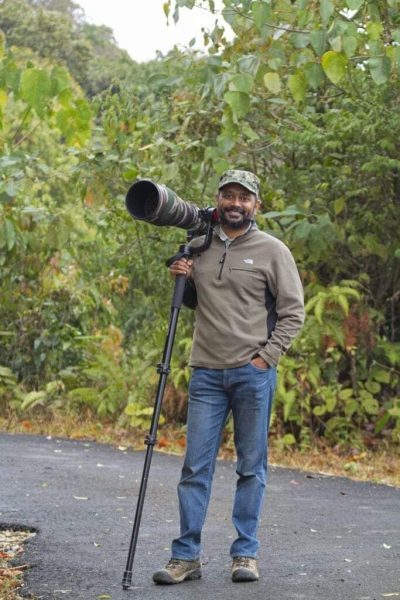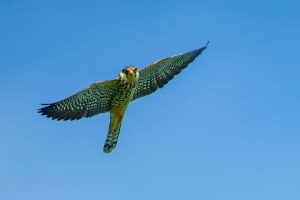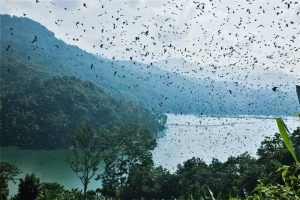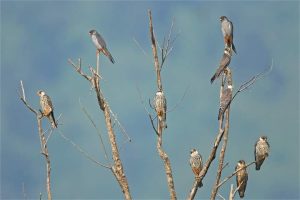
Wildlife lensman Ramki: A conservationist, and saviour of Amur falcons
A well-known wildlife photographer and passionate conservationist, Ramki, who succumbed to lung cancer on December 17, had promoted ethical wildlife photography

“We define conservation as knowledge-driven actions that lead to the effective management and recovery of wildlife. That means giving priority to meeting the ecological needs of wildlife populations in decline and to the recovery and expansion of their habitats”, says Conservation India, an online platform.
And, wildlife conservation was what Ramki, aka Ramakrishnan Sreenivasan, was passionate about till the end of his life. After battling lung cancer for the last few years, he breathed his last on the night of December 17, 2022. He was 50.
Also read: Why wildlife conservationist Ranjitsinh is all for cheetah’s ghar wapsi
Born and brought up in Chennai and settled in Bengaluru, Ramkrishnan, who was fondly called Ramki, was a technology entrepreneur who co-founded organisations like Intercepts and Marketics Technologies India. This was well before fashionable words like ‘dotcom’, ‘online’, ‘start-ups’ and ‘data analytics’ became common in public parlance.

However, Ramki always wanted to be identified as an “avid wildlife photographer and passionate conservationist”. “I am out in the wild most of the time,” he would say often.
Photography for conservation
Ramki found an interest in birdwatching at the age of nine. Slowly, his passion turned towards photography. He had belonged to the generation which had yet to see wildlife photography turn into a profitable vocation.
It was in the 1990s, a new generation started to exploit the environment in the name of wildlife photography. This was largely due to cameras and lenses becoming cheaper, young people were earning more and the advent of social media meant their ‘hobby’ got a lot of recognition in the form of likes. These wannabe photographers did more damage than good to the animals in the wild that they shot.
“One of the most disgraceful chapters in the history of wildlife photography in India is the nest photography craze that spread like wildfire in the early 1990s,” wrote Ramki in a book that he called a ‘document that will remain as work in progress’, which later became a guide to ethical wildlife photography, titled Don’t Shoot Like That, along with wildlife documentary filmmaker Shekar Dattatri.
“In a quest to outdo each other, many photographers practice a level of insensitivity and brutality that was horrifying. Their modus operandi was quite simple: they would scout around, or offer rewards to villagers, for locating active nests. Once the nest of a desired species was discovered, the photographer would land up and do some ‘gardening’ – a euphemism for removing leaves or twigs to get a clear view of the nest.”
“With the obstructions out of the way, nesting activity would be photographed from all angles, sometimes with multiple flashes positioned around the nest. Once the photographer was satiated with his efforts, he would depart, leaving the exposed nest vulnerable to predators. Some went even further, and destroyed the nest (and eggs or chicks) so that other photographers could not take advantage of their find”, the book read.
Also watch: Much to be done for cheetah, wildlife conservation | Off the Beaten Track
This irresponsible photography and the lack of credible platforms to upload the photos and share the learnings of and from fellow conservationists, prompted Shekar Dattatri to establish Conservation India in January 2012, where ‘conservation photography’ is promoted rather than ‘wildlife photography’.
Saving the Amur falcons
Ramki’s another achievement was converting hunters into guardian angels of Amur Falcons in Nagaland.

Native to South Russia and North China, these birds are listed as ‘endangered species’ by the International Union for Conservation of Nature. Every winter, these birds migrate and arrive at Nagaland’s Doyang valley reservoir in Wokha district. Nagaland is their roosting site, meaning a stopover, before making a long journey towards southern Africa.

These birds became a victim of poaching by the people of the region. When the birds descended on the forested patches along the banks of the reservoir to roost, hunters used to set up huge fishing nets and caught these birds in large numbers. The birds then turned into delicacies. During his visit to this region for a survey of these birds in October 2012, Ramki and his fellow conservationists found that every house had Amur Falcons either dead or dying.
“They visually documented the trapping and killings. I helped put these together in the form of a three-minute video, which urged people to write to the authorities to end the illegal hunting of the falcons. Shared widely by Conservation India, the video garnered National and international attention and helped to put an immediate stop to the massacre,” said Shekar Dattatri, who made a documentary about the campaign and the efforts to conserve Amur Falcon titled ‘The Race to Save the Amur Falcon’. It is available on YouTube.
Friends of the Amur Falcon
In order to stop the poaching of these birds by creating awareness, Ramki, along with other conservationists like Bano Haralu, launched a campaign called ‘Friends of the Amur Falcon’ in August 2013.
Since India is a signatory to the Convention on Migratory Species, 1979, the country is duty bound to prevent the poaching of the migratory bird species and provide a safe passage. Ramki and his team’s effort bore fruit, since the poaching has drastically reduced.
Lung cancer diagnosis
In 2017, Ramki was diagnosed with lung cancer. As a person mindful of his physique and dietary habits and being an ardent yoga practitioner, a runner, a vegan and a non-smoker, the diagnosis hit him hard.
“Patients diagnosed with cancer should explore integrating yoga into their recovery as soon as possible. Yoga is not a ‘feel good’ factor but a powerful aid in healing by bringing balance to mind and body. It is to be noted that integrated therapy for cancer is becoming mainstream globally,” he wrote in an article published in August 2021.
It was during this time, he founded ‘Wildlife For Cancer’, an online platform where visitors could buy large and high quality prints of his photographs, which directly funded cancer treatment for the needy.
“As a patient, I would say treat and think of cancer as just another disease (it is), do some research (not too much), be nice to your caregiver, press the reset button and prioritise what you truly want to do for the rest of your life,” Ramki wrote as a piece of advice in his article. And, he stayed true to this advice till the end.

